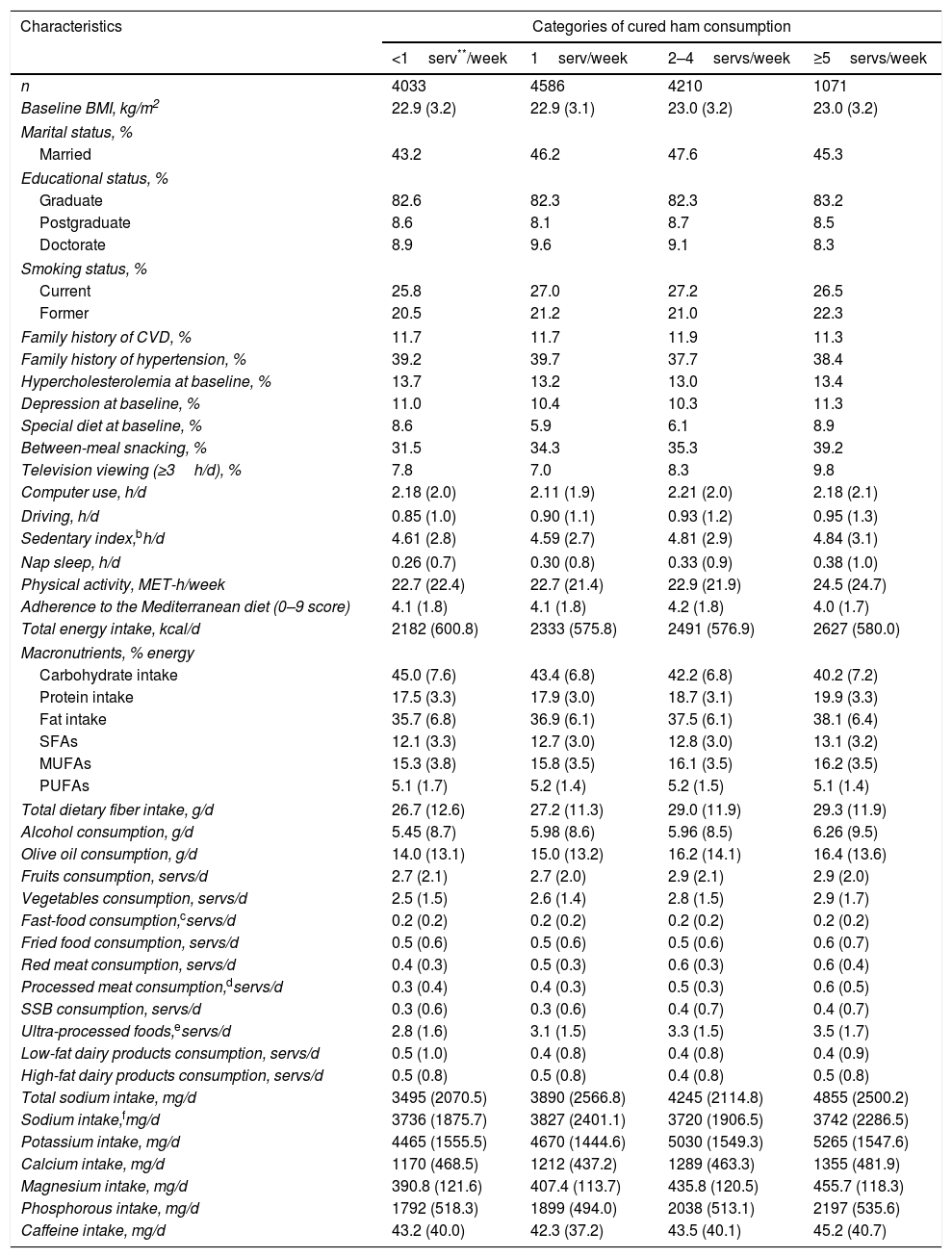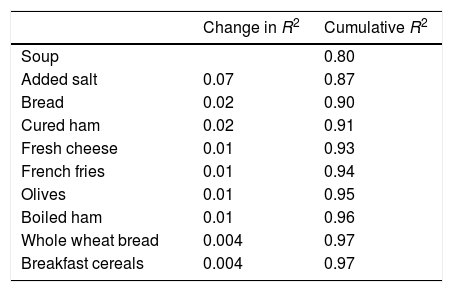Cured ham is one of the most characteristic foods in the Spanish diet. Because it is a red processed meat and due to its nutritional composition, including high sodium content, a potential association between cured ham consumption and a higher risk of hypertension could be expected. However, epidemiological studies evaluating this association are scarce. We prospectively assessed the association between cured ham consumption and the incidence of hypertension.
MethodsThe “Seguimiento Universidad de Navarra” (SUN) study is a cohort of Spanish middle-aged adult university graduates (average age: 38 (SD: 12) years, 60% women). We included 13,900 participants of the SUN cohort free of hypertension at baseline. One serving of cured ham is 50g. They were classified into 4 categories of cured ham consumption: <1; 1; 2–4 and ≥5servs/week. Multivariable-adjusted Cox regression models were fitted to assess the association between cured ham consumption and subsequent hypertension risk using the category of lowest consumption as the reference.
ResultsAfter a median follow-up of 10.9 years, 1465 incident self-reported cases of hypertension were identified. After adjusting for potential confounders, including dietary confounders, a high consumption of cured ham (≥5servs/week vs. <1serv/week) was not significantly associated with hypertension risk in this prospective cohort (HR=0.88, 95% CI: 0.70–1.10, p linear trend=0.40).
ConclusionsOur results showed that cured ham consumption was not associated with a significantly higher or lower risk of hypertension in a prospective cohort of Spanish middle-aged adult university graduates. Further longitudinal and experimental studies are needed to disentangle the association between cured ham consumption and the risk of hypertension.
El jamón serrano es uno de los alimentos más característicos de la dieta española. Debido a que es una carne procesada y a su alto contenido en sodio, podría esperarse un mayor riesgo de hipertensión arterial (HTA). Sin embargo, los estudios epidemiológicos que evalúan esta asociación son escasos. Se evaluó prospectivamente la asociación entre el consumo de jamón serrano y la incidencia de HTA.
MétodosEl estudio Seguimiento Universidad de Navarra (SUN) es una cohorte de graduados universitarios españoles (edad promedio: 38 (DE:12) años, 60% mujeres). Incluimos a 13.900 participantes sin hipertensión prevalente. Una ración de jamón serrano equivale a 50g. Se clasificaron en 4 categorías de consumo: <1; 1; 2-4 y ≥5 raciones/semana. Se utilizaron modelos de regresión de Cox para evaluar la asociación entre el consumo de jamón serrano y el riesgo de HTA, utilizando la categoría de menor consumo como referencia.
ResultadosDespués de una mediana de seguimiento de 10,9 años, se identificaron 1.465 casos auto-referidos incidentes de HTA. Tras ajustar por potenciales factores de confusión, se observó que un alto consumo de jamón serrano (≥5 raciones/semana frente a <1 ración/semana) no se asoció significativamente al riesgo de HTA (HR: 0,88; IC 95%: 0,70-1,10; p tendencia lineal=0,40).
ConclusionesNuestros resultados muestran que el consumo de jamón serrano no se asoció a un riesgo significativamente mayor o menor de HTA en una cohorte prospectiva de graduados universitarios españoles. Se necesitan más estudios longitudinales y de intervención para evaluar la asociación entre el consumo de jamón serrano y el riesgo de HTA.













